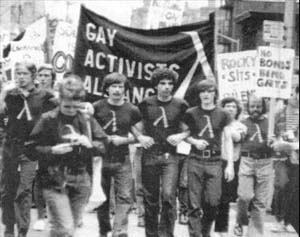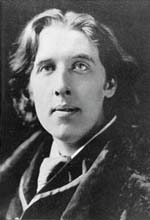
|
|
|
|
Telling Tales: For GLBT History Month Jesse's Journal
|
|
From them I learned how difficult (but possible) it was to be gay back then; how far we have come since then; and how far we still had to go. As the son of heterosexual parents (like most of us are), I did not learn about my community's history from my parents; nor from my teachers or my (heterosexual) peers. Thus my education as a gay man had to come from gay sources, from books written by gay people and from the stories told to me by other gay men. Thirty years later, I still remember the lessons that I learned from those men, many of who are no longer with us. Now that I am somewhat older myself I want to continue that tradition and teach a new generation of our past, whether in person or through my writing. I find this tradition to be especially relevant in this month of October, otherwise known as Gay, Lesbian, Bisexual and Transgendered (GLBT) History Month. (There has been some discussion lately about whether we should use describe our community as GLBT or LGBT. Again, this is a topic for another article.) GLBT History Month began in 1994 when Rodney Wilson, a high school teacher in Missouri, decided to do something about the lack of queer voices in history textbooks. He organized other educators and community leaders for the purpose of educating students and the general public about our history; the history that many of us learned from older GLBT people when we first came out. After much discussion, October was chosen as GLBT History Month, being the anniversary month of both the 1979 and 1987 National Marches on Washington, DC for Lesbian and Gay Rights. October 11, the anniversary of the 1987 March, is also Coming Out Day, which is second only to GLBT Pride Day (June 27, the anniversary of the Stonewall Uprising) as a political holiday for our people. Last, but certainly not least, October 31 is Halloween, which has been a day of celebration for queers everywhere long before we began to organize politically. The advocacy group, Gay and Lesbian Americans, one of the early organizers of GLBT History Month, hoped that it would "help educate the public about the contributions gays and lesbians have made in the arts, sciences, politics and sports." Or as historian William A. Percy put it, "specifying every October as Lesbian and Gay History Month is the first step in reclaiming our heroes and heroines, and our past." For a long time, what passed for GLBT history was a roster of "great gays in history." This was used by many apologists to "justify" sexual or gender variance: "It is not so bad to be a gay man if Michelangelo was one." But Michelangelo's sexual orientation, which is still debated, does not do away with homophobia any more than Albert Einstein being a Jew did away with anti-Semitism or Louis Armstrong being Black did away with racism. For every James Baldwin or Gertrude Stein there were countless women and men who struggled anonymously against a hostile society and religious, legal and scientific systems that branded them sinners, criminals or mentally ill. The fact that many of them survived such a regimen to create loving households, supportive social groups and flourishing communities say a lot about their survival skills. We are here today because of them.
While we can learn much from books or videos, they only supplement what we must learn from personal contact with those who came before us. Therefore, next time an "older" GLBT person wants to tell you her story or his story (herstory or history), please listen. Their stories are quaint, funny, tender, touching and sad, and they all have something to teach us. And when the time comes, do not hesitate to tell your own story to those who come after us, so they too will learn. That is what GLBT History Month is all about.
|
 Members of the Gay Activists Alliance on the march in the early 1970s
Members of the Gay Activists Alliance on the march in the early 1970s  Oscar Wilde
Oscar Wilde  Jesse Monteagudo is a freelance writer and ancient activist who lives in South Florida. Share your stories with him at
Jesse Monteagudo is a freelance writer and ancient activist who lives in South Florida. Share your stories with him at